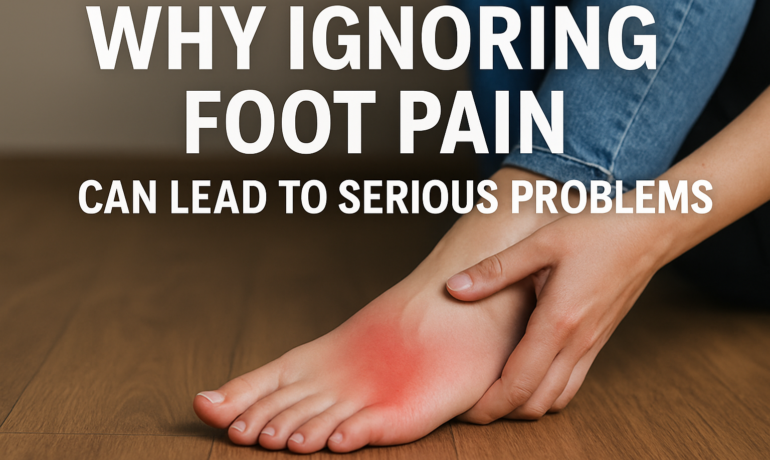Your feet carry you through life, yet they’re often the most neglected part of your body. Many people dismiss foot pain as a temporary issue caused by tiredness or long walks, but persistent pain can be a warning sign of an underlying condition. Ignoring it may lead to chronic foot problems, mobility issues, and even long-term complications. This blog explores why addressing foot pain early is crucial for maintaining healthy movement and preventing future discomfort.
1. Understanding Foot Pain: More Than Just Soreness
Foot pain can occur due to several causes—poor footwear, overuse, sports injuries, or medical conditions such as plantar fasciitis, heel spurs, flat feet, or arthritis. While mild pain might subside with rest, recurring discomfort signals structural or muscular issues that need medical evaluation. Ignoring foot pain may allow minor problems to worsen into serious conditions that affect your posture, gait, and daily activity levels.
2. Common Causes of Foot Pain
Improper Footwear: Tight shoes, high heels, or lack of arch support can strain muscles and ligaments.
Overuse Injuries: Runners and athletes often experience stress fractures or tendonitis from repetitive impact.
Medical Conditions: Diabetes, gout, and nerve disorders like neuropathy can contribute to foot discomfort.
Structural Problems: Flat feet, bunions, or hammertoes cause abnormal foot alignment leading to pressure and inflammation.
3. Health Risks of Ignoring Foot Pain
Unchecked foot pain can trigger a chain reaction throughout your body. Misalignment in your feet affects your knees, hips, and spine. Over time, this leads to chronic pain and joint degeneration. Neglecting symptoms can result in reduced mobility, poor balance, and an increased risk of falls. In diabetic patients, untreated foot pain might develop into ulcers or infections, leading to serious complications.
4. Early Diagnosis Prevents Major Problems
Getting a foot examination by a podiatrist or orthopedic specialist helps identify underlying causes. Early diagnosis prevents progression to more severe conditions like Achilles tendonitis, heel spur syndrome, or nerve compression. Doctors may recommend imaging tests or gait analysis to pinpoint the issue and suggest a tailored treatment plan including rest, physiotherapy, or orthotic support.
5. Simple Preventive Tips for Healthy Feet
Wear well-fitted, cushioned shoes with proper arch support.
Stretch and strengthen your feet and ankles regularly.
Maintain a healthy body weight to reduce pressure on your feet.
Avoid standing or walking for long hours without rest.
Keep your feet clean, moisturized, and inspect them for cuts or swelling.
Implementing these small changes helps prevent future foot injuries and supports long-term foot health.
6. When to Visit a Doctor
If you experience persistent swelling, redness, or shooting pain that lasts more than a few days, seek medical attention. Ignoring these signs can lead to severe conditions like tendon tears, stress fractures, or chronic plantar fasciitis. Early treatment with orthopedic consultation ensures faster recovery and avoids the need for surgery later.
7. Treatment Options for Foot Pain
Depending on the diagnosis, treatment may include:
Physical Therapy: To restore flexibility and strength.
Orthotic Insoles: To correct posture and relieve pressure points.
Medication: For pain relief and inflammation control.
Minimally Invasive Surgery: In severe or chronic cases.
Professional care ensures pain-free movement and helps maintain your overall foot health.
Conclusion
Ignoring foot pain can transform a minor ache into a chronic health issue. Listen to your body early—proper care and timely treatment can help you walk pain-free for years.

